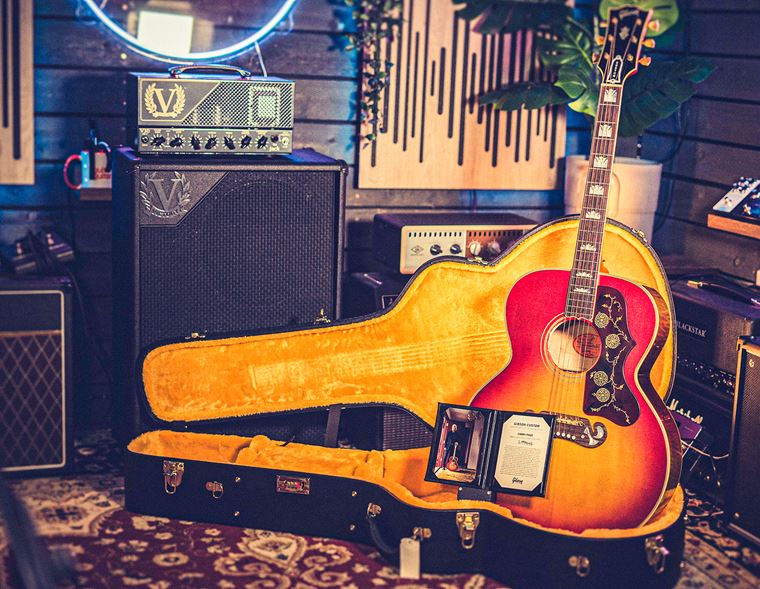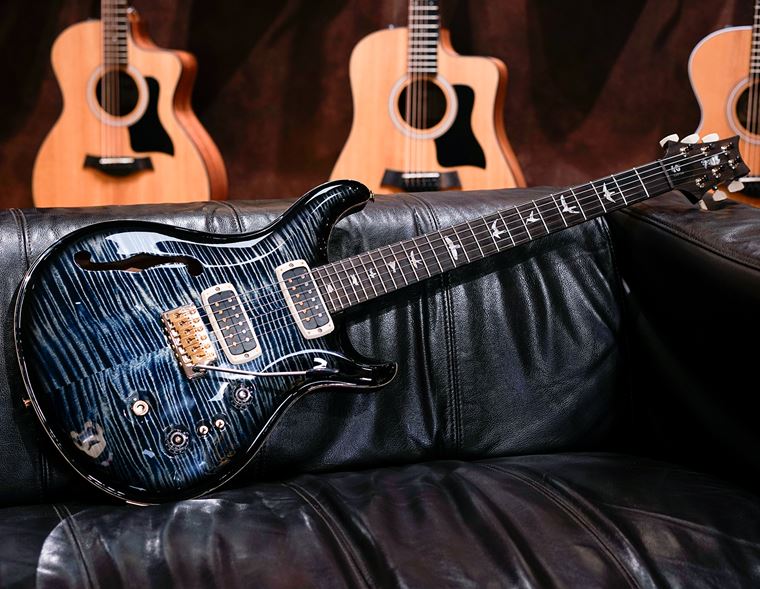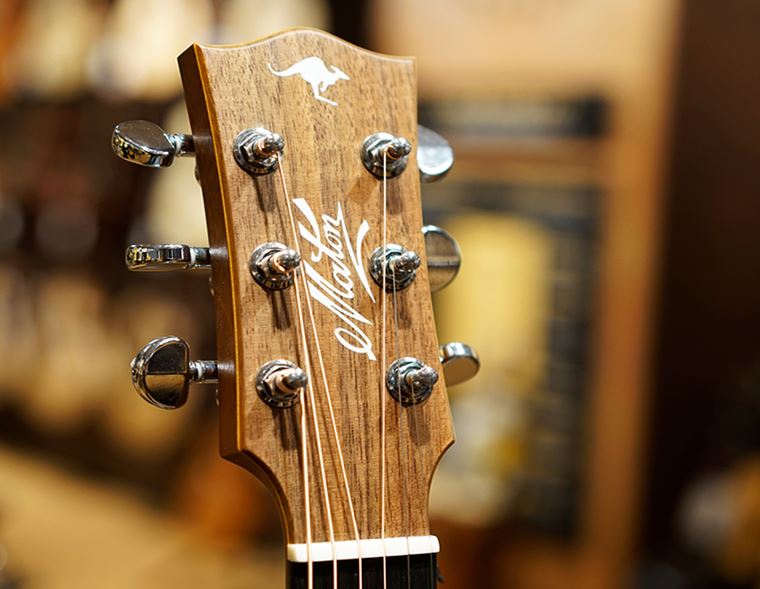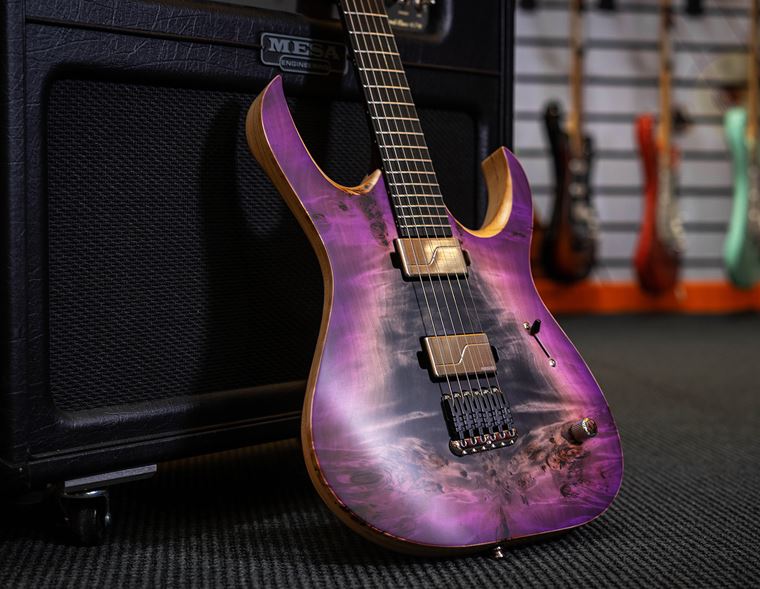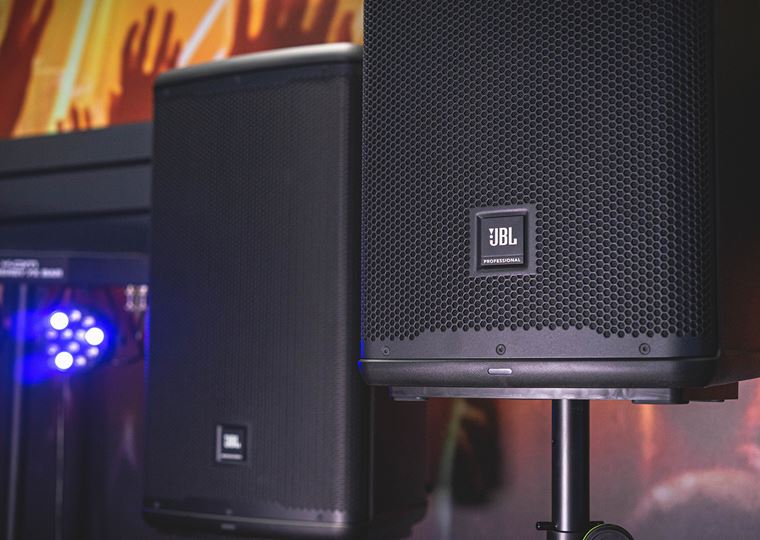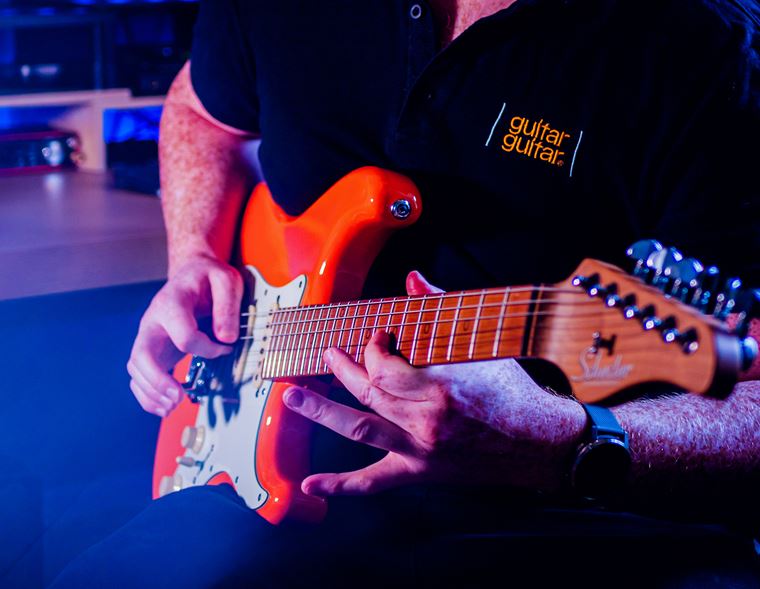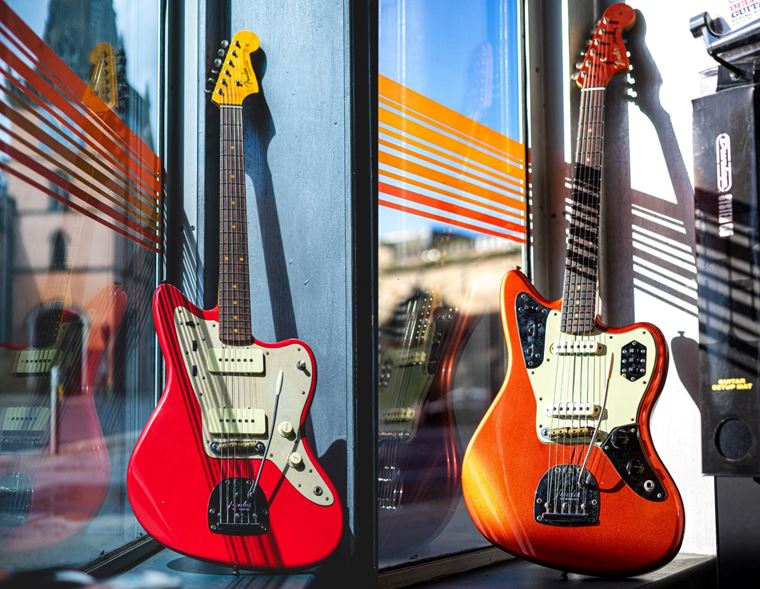Benefits of Headless Guitars: What do Our Experts Think?
Published on 22 September 2022
.jpg)
‘Don’t call it a comeback’, headless guitars have emerged from their 80s time capsule and it looks like they’re here to stay. As one of the most controversial topics within the guitar world, let’s explore the benefits of headless guitars and the reasons behind their unexpected return to the spotlight.
So, What is a Headless Guitar?
Whilst it might be pretty self explanatory, a headless guitar is simply a guitar that has been built without its traditional headstock. There are many reasons why the headless guitar was created, many say that aesthetic was a primary factor however factors such reducing weight and creating a more balanced instrument are also reasons behind many brands going headless. This leads to the question, how do you tune it? The tuning pegs have been flipped top to tail, meaning that you don’t need to move your hand away from the body to tune, especially important for those mid-song tuning adjustments!
A Bit of History
Steinberger was the first builder to successfully tackle the concept of the headless guitar and get it on the market in the 80s. But they were far from the first to create a headless guitar, with historical builders such as Les Paul trialling the design in the mid 1940s before scrapping it entirely due to issues around tuning stability.
Ned Steinberger created a compact, futuristic and unique type of instrument that fueled the future of guitar playing. Their growing popularity saw iconic guitarists such as David Gilmour, Eddie Van Halen and Mark Knopfler using these guitars throughout their careers. But like many trends of its time, the headless guitar disappeared after the 80s, dividing the community on whether or not it was for the best. However, similar to vinyl, Kate Bush, and Mom Jeans - The headless guitar has made a very unexpected comeback, all thanks to a fresh generation of guitar players and builders!
What are the Benefits of Headless Guitars?
- With no headstock, the weight of a headless guitar differs greatly to a traditional guitar, this means less of a strain on your neck and shoulders.
- The guitar’s centre of gravity is altered to make it well balanced, meaning no more neck drop and less wrist tension when playing standing up. You can be sure that your guitar will stay where you want it.
- Restringing a guitar has never been easier: you simply need to clamp the string down and cut off any excess, tune up and you’re ready to go!
- Their compact build makes them great for travelling, no more huge cases taking up space in the boot of your car or a plane’s overhead compartment.
- With companies such as Strandberg opting for sustainable wood within their instruments, you can be sure that going headless is supporting eco-friendly guitar building methods.
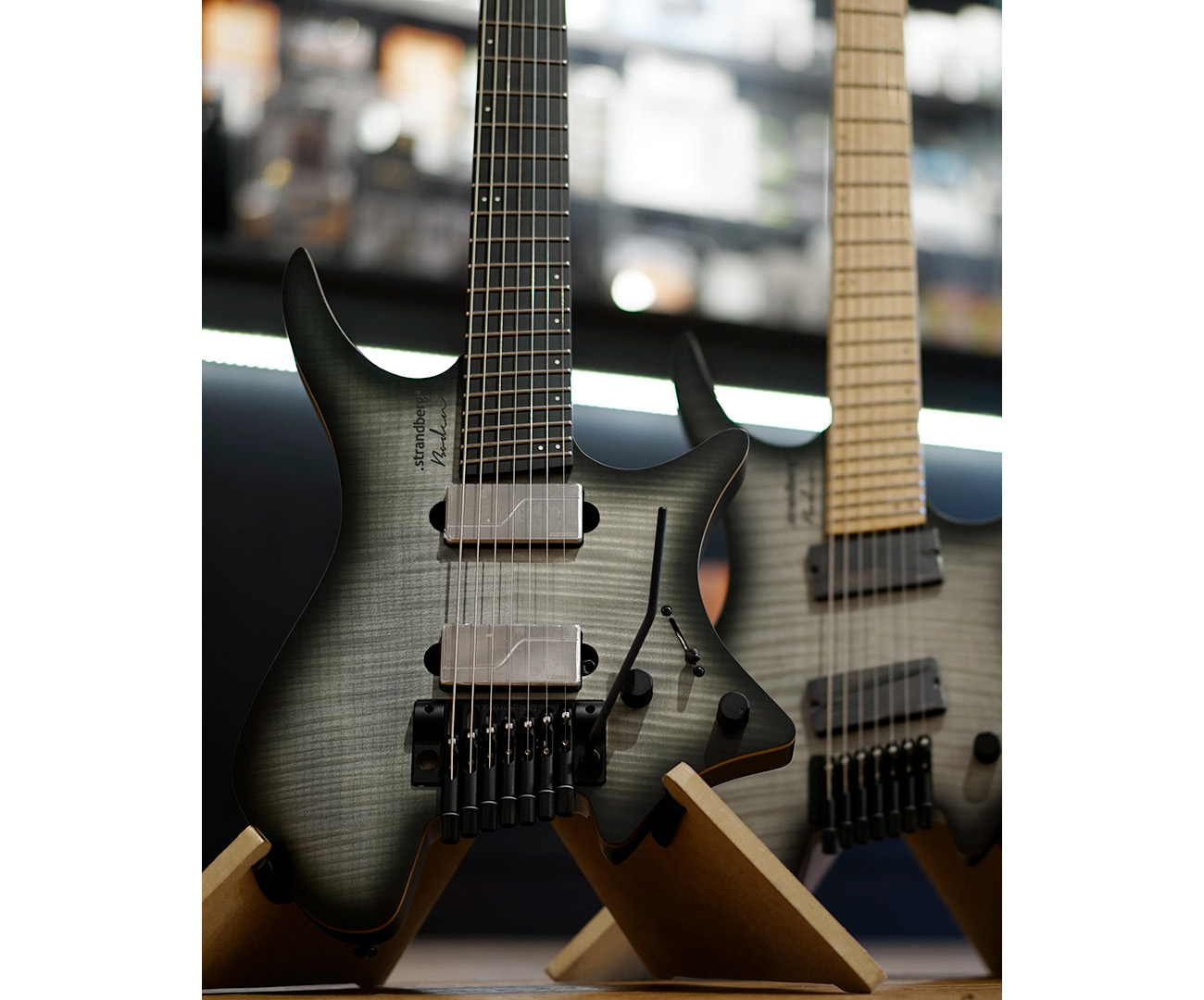
So it’s lighter, more compact, and has better balance - how does it affect sound?
With the headless guitar design having been picked up by some of the most iconic guitarists of all time, it’s no surprise that these guitars sound great too. So let’s look into what exactly is different about the sound of a headless guitar to its traditional counterpart.
Headless Guitars (typically) Have No Nut
The nut that holds each string of the guitar in place creates a slightly different tonality in comparison to a fretted note, however headless guitars remove the need for the nut overall. By replacing the nut with a ‘zero’ fret, this allows guitarists to maintain a consistent sound when changing between open and fretted notes, as all notes are then technically fretted!
The Bridge / Tuning System Allows for Even More Clarity in Your Tone
With the traditional headstock having a length of string between the nut and the tuning peg, this allows for any strings to pick up subtle but noticeable vibrations when you’re playing single notes. Due to the nature of the headless guitar giving very little distance between the end of the string and where it is being clamped down, this allows for more clarity in your tone and less resonance - if that’s what you’re looking for!
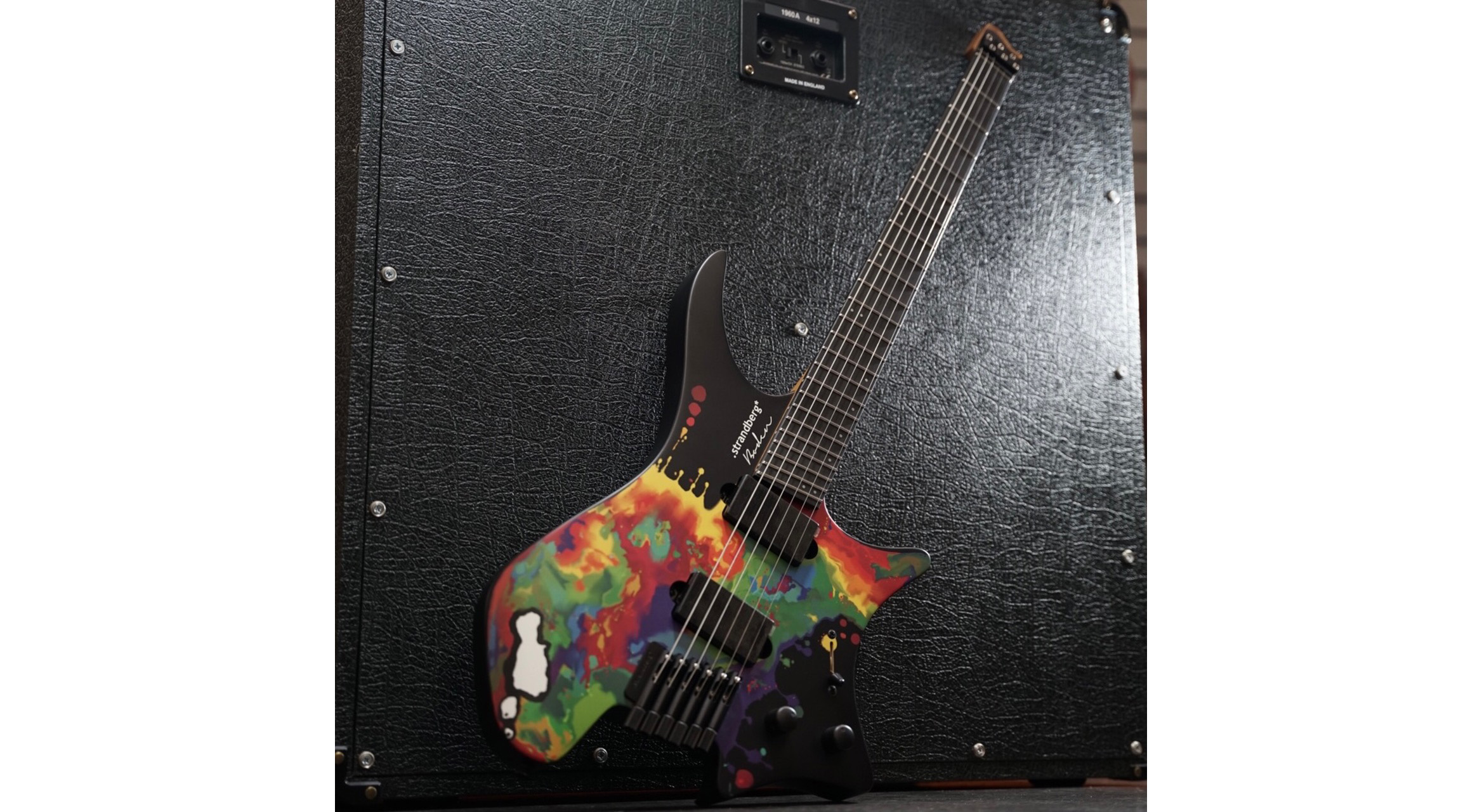
Creating a Foundation for the Future of Guitar Playing
One of the modern innovators of the headless guitar movement is Strandberg guitars. Like Ned Steinberg, Ola Strandberg started as an industrial designer, which was influential in creating these ultramodern designs. An example of Strandbergs innovation is their original neck design known as The Endurneck™. The Endurneck™ aims to increase the comfort, accessibility and endurance of the guitarist, with an asymmetrically profiled neck and defined edges to assist in fighting fatigue and increasing mobility when playing across the whole fretboard.
As guitarists, we know how important it is to feel comfortable when playing, whether it’s sitting down for a quick jam or playing every night on tour. Headless guitar brands are taking comfort to the next level by building well balanced, lightweight guitars that are designed to fit perfectly in your hands.
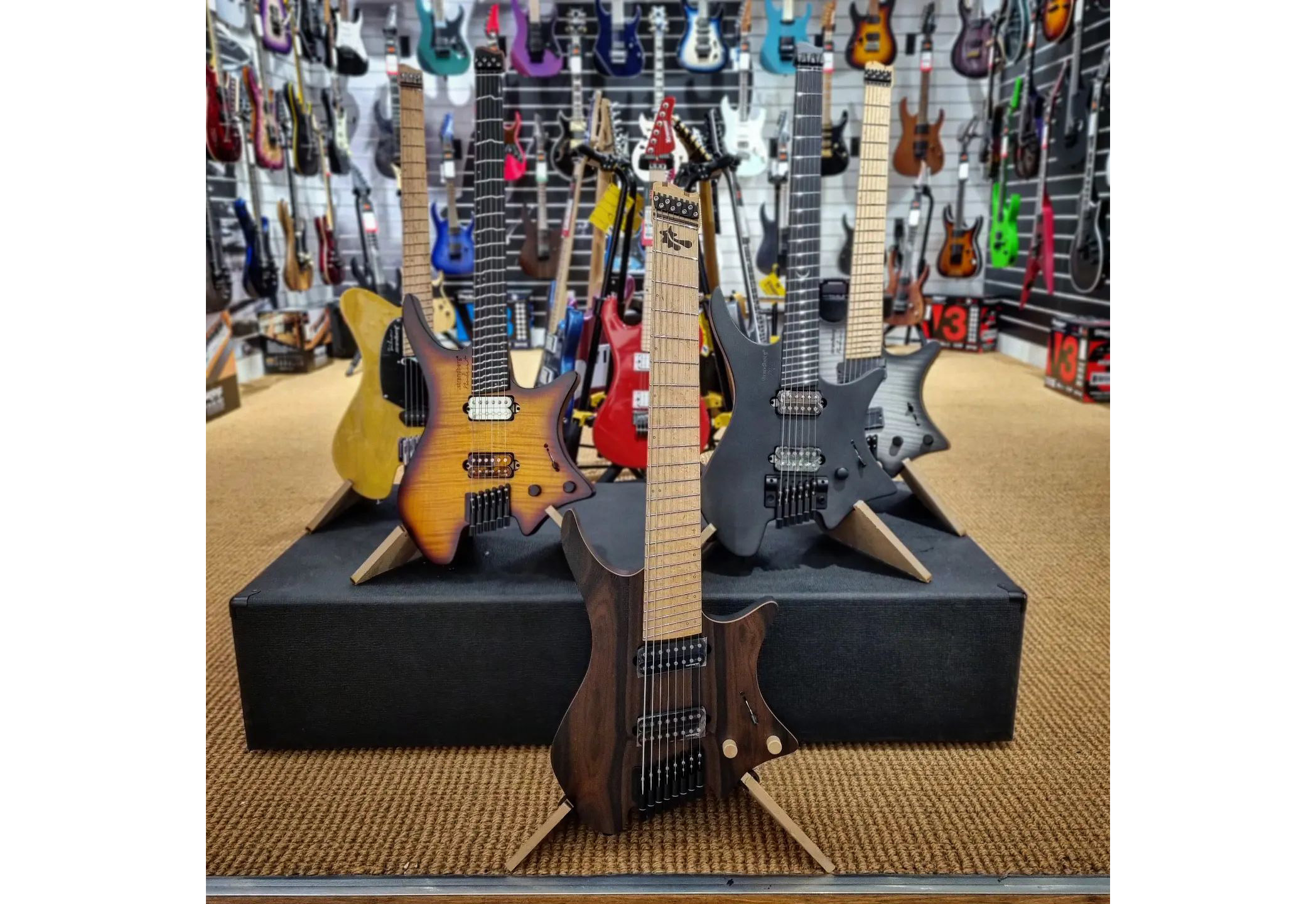
Top Headless Guitar Players
Looking for inspiration to start your own exploration of headless guitar players? Here's our top picks of headless players that we love!
Yvette Young (Covet)
Covet's own Yvette Young is a great example of how headless guitars can both sound and look great. Taking unique to a whole new level with her handpainted Boden 7, Yvette Young showcases the variety of sounds that the Strandberg caters to in this playthrough of Ares.
Plini
As a technical player, Plini relies greatly on comfort, tone and dynamics when writing and performing. As a strandberg artist, his signature Boden Prog NX 6 is perfect at maintaing a consistent and melodic sound with ease.
Watching this playthrough of Impulse Voices makes it all look so easy!
Alessandro Venturella (Slipknot)
Following Paul Gray as the bassist of Slipknot is no easy task, but Allessandro 'V Man' Venturella definitely maintains that amazing bass tone with his Status S2 Graphite. As if going headless didn't stand out enough, his bass also features some awesome lightup inlays.
Conclusion
So there we have it! As you can see, the benefits of headless guitars are more than simply just for aesthetic purposes! Whilst the headless look may take a while to get used to, the brands that are building these instruments are ahead of the game in developing the future of guitars.
It's definitely worth seeing what going headless can do for you, whether you're looking for a great sounding travel guitar, or trying to take some pressure off your shoulders during a long jam session. Overall, if you just want a unique and modern guitar that stands out on stage, there is definitely something in our headless range for you!




